Did you know? The hamstrings – those powerful muscles running along the back of your thighs – are responsible for much more than just bending your knees.
They’re crucial for posture, balance, and even protecting your knees and lower back from injury. Yet, many people either neglect them or think that gym machines are the only way to work them out.
But here’s the kicker: You don’t need fancy equipment to sculpt stronger hamstrings! Bodyweight exercises can do wonders for these muscles, improving flexibility, strength, and injury prevention, all from the comfort of your home or a park bench.
Whether you’re a beginner or a fitness enthusiast, these 10 effective hamstring exercises will challenge your lower body and keep you moving like an athlete.
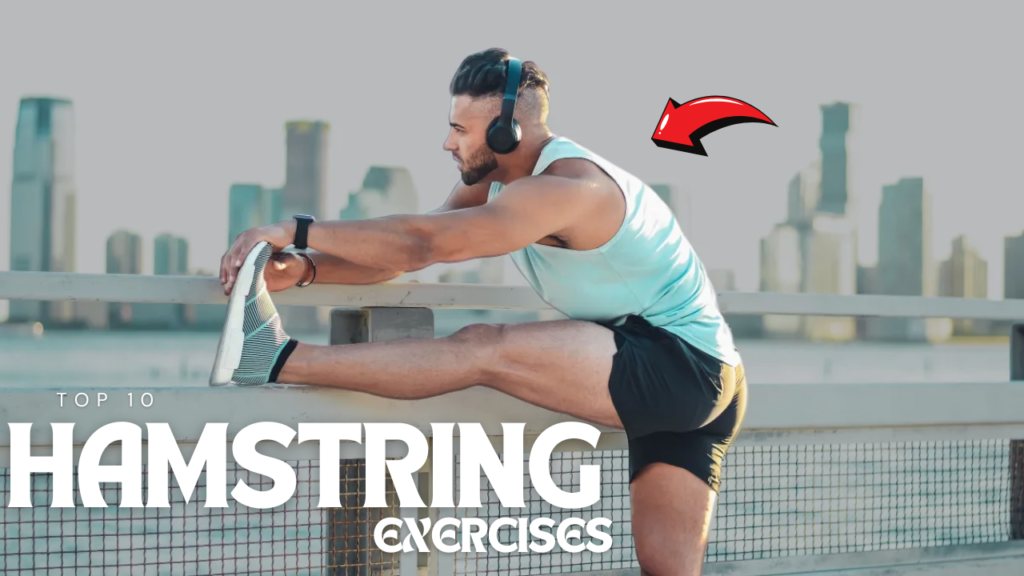
Table of Contents
What Can Happen After 30 Days of Bodyweight Hamstring Exercises
| Positive Outcomes | Potential Challenges |
|---|---|
| Noticeable increase in hamstring strength and muscle tone. | Mild muscle soreness as muscles adapt to new movement patterns. |
| Improved flexibility and range of motion in the hamstrings and hips. | Plateau if progression (like reps or difficulty) isn’t gradually added. |
| Better balance and stability due to enhanced posterior chain strength. | Possible boredom if routine isn’t varied. |
| Enhanced performance in daily activities and sports requiring lower-body strength. | Overtraining if rest and recovery days are not incorporated. |
| Reduced risk of hamstring injuries thanks to stronger, more resilient muscles. | Potential strain if exercises are performed with poor form or excessive reps. |
| Improved posture and reduced lower back discomfort from hamstring engagement. | Neglecting complementary muscle groups (like quads or glutes) may cause imbalances. |
Do’s and Don’ts of Bodyweight Hamstring Exercises
| Do’s | Don’ts |
|---|---|
| Warm up before starting to prevent muscle strain. | Skip warm-ups, which can increase the risk of hamstring injuries. |
| Focus on slow, controlled movements for maximum muscle engagement. | Rush through reps with poor form, which reduces effectiveness. |
| Keep your core engaged to maintain stability and balance. | Over-arch or sag your lower back, especially during bridges and deadlifts. |
| Start with beginner-friendly variations and progress gradually. | Jump into advanced moves without mastering proper form. |
| Breathe steadily—inhale during the easy phase, exhale during exertion. | Hold your breath, which can increase tension and affect performance. |
| Use a soft surface or mat for exercises performed on the floor. | Perform floor exercises on hard surfaces, risking discomfort or injury. |
| Maintain regular practice (2–3 times per week) for best results. | Overtrain by working hamstrings every day, which may lead to strain. |
| Focus on mind-muscle connection to engage hamstrings effectively. | Rely solely on momentum instead of muscle engagement. |
| Stretch post-workout to improve flexibility and reduce soreness. | Neglect post-workout stretching, which can contribute to tightness. |
| Modify exercises if you experience discomfort or pain. | Push through pain, which can worsen injuries. |
1. Glute Bridge March
This variation of the classic bridge targets your hamstrings and glutes with added stability work.

- How to do it:
- Lie on your back with your knees bent and feet flat.
- Lift your hips, squeezing your glutes and hamstrings.
- While holding the bridge, lift one knee towards your chest.
- Lower the foot and repeat on the other side.
Do you know? Alternating legs in this move increases core stability while deepening the hamstring contraction.
2. Single-Leg Glute Bridge
Challenging and effective, this exercise isolates each hamstring for maximum engagement.
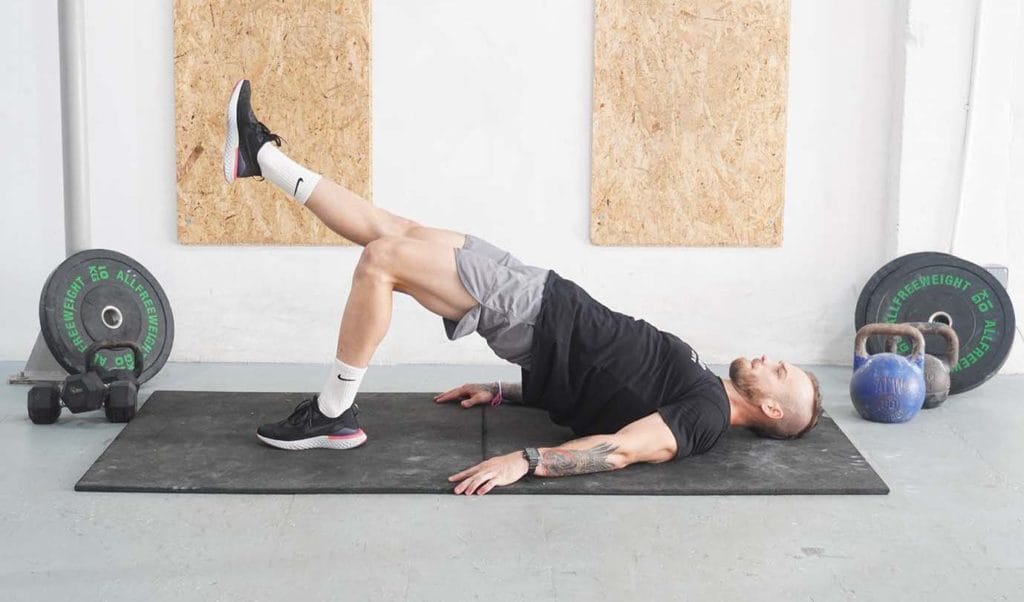
- How to do it:
- Lie down, one knee bent, the other leg extended.
- Drive your hips upward, keeping the extended leg straight.
- Lower slowly and repeat.
Myth buster: People often think bridges are just for the glutes, but with proper form, they heavily target the hamstrings too!
3. Nordic Hamstring Curl (Assisted)
Often called the “king” of hamstring exercises for its eccentric focus.

- How to do it:
- Kneel with your feet anchored under a sturdy object or have a partner hold them.
- Slowly lower your torso forward, controlling the descent.
- Push yourself back up using your hands if needed.
This exercise mimics the movements of sprinting, making it popular among athletes.
4. Reverse Tabletop
This move not only stretches but also strengthens your hamstrings and posterior chain.

- How to do it:
- Sit with hands behind you, knees bent, feet flat.
- Press into your palms and lift your hips to form a “table” shape.
- Hold for a few seconds, then lower.
Interesting fact: This exercise improves shoulder mobility and posture too!
5. Wall-Facing Single-Leg Deadlift
Perfect for balance and hamstring isolation.
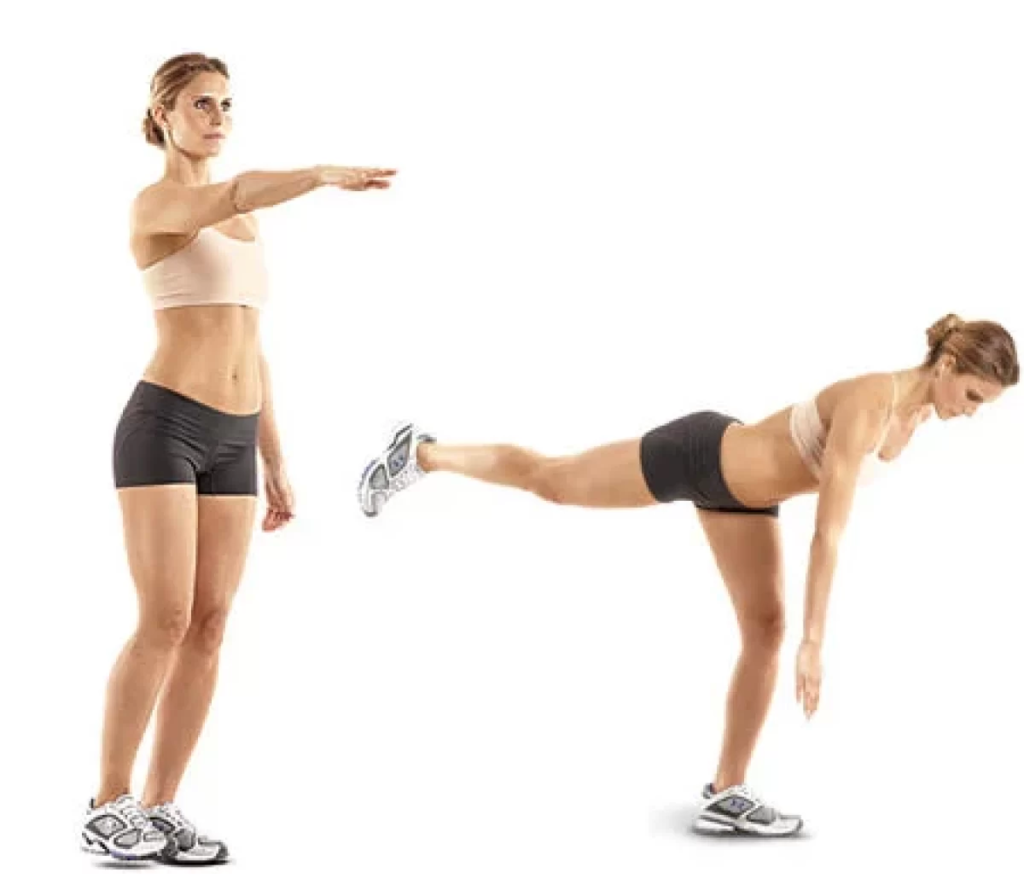
How to do it:
- Stand facing a wall, arms extended lightly for balance.
- Hinge at the hips, lifting one leg back while lowering your torso.
- Return to start, repeat on the other side.
Did you know? Bodyweight deadlifts closely mimic the movements of weighted versions without added strain.
6. Hamstring Walkouts
A dynamic, hamstring-heavy move that’s deceptively challenging.
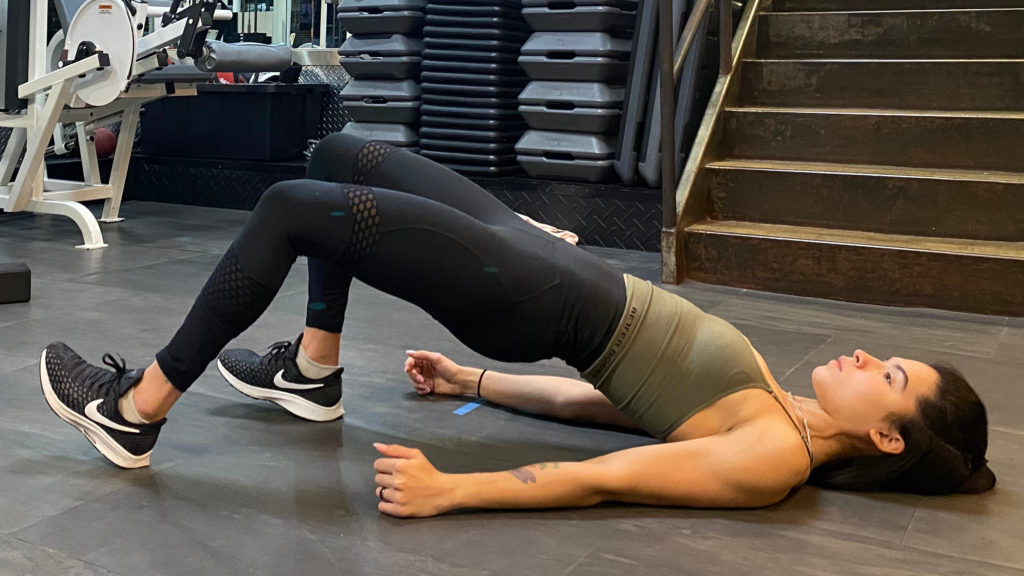
- How to do it:
- Start in a glute bridge position.
- Walk your feet forward one step at a time until your legs are almost straight.
- Walk them back in and repeat.
Tip: Keep hips lifted throughout to maximize hamstring activation.
7. Sliding Leg Curls (On Towels or Sliders)
A gym-quality exercise using common household items.
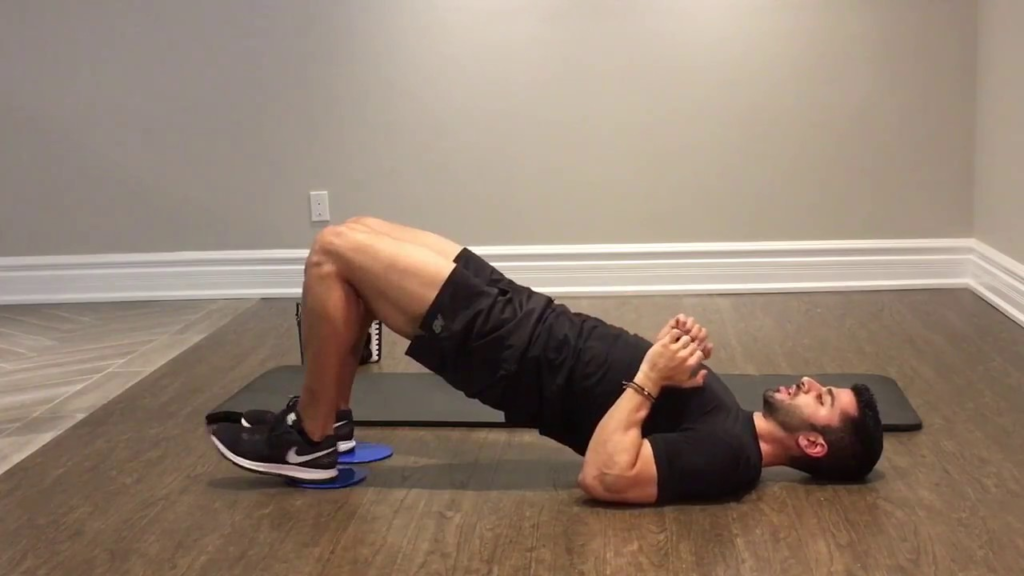
- How to do it:
- Lie on your back with heels on sliders or towels.
- Lift hips and slide heels out, keeping hips raised.
- Pull your heels back to start.
Fun fact: The eccentric (lengthening) phase here is what strengthens the hamstrings the most!
8. Good Morning with Bodyweight
A classic hip hinge that emphasizes hamstring flexibility and strength.

- How to do it:
- Stand tall, hands on hips.
- Hinge forward at the hips, keeping your back flat.
- Engage your hamstrings as you return to standing.
Myth buster: Many people avoid this move thinking it’s for weightlifters, but it’s equally effective using just your bodyweight.
9. Standing Hamstring Curl
A simple yet effective exercise that mimics machine curls.
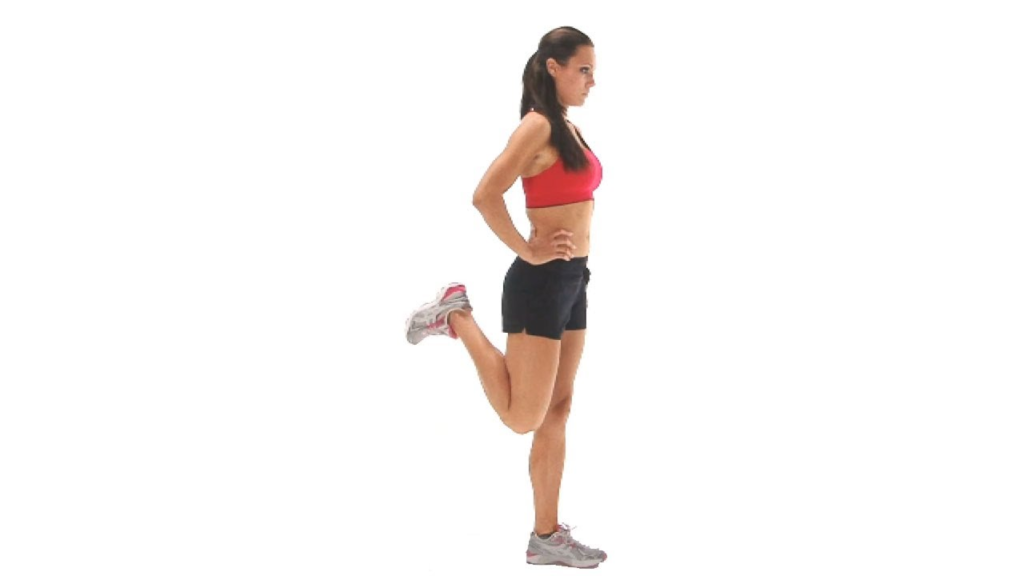
sportsinjuryclinic.net
- How to do it:
- Stand with hands on hips or a wall for support.
- Bend one knee, bringing your heel toward your glutes.
- Squeeze the hamstring at the top, then lower, and switch legs.
Did you know? This move improves hamstring endurance, especially for runners.
10. Superman Hold with Hamstring Focus
A total-body move that hits the hamstrings, glutes, and lower back.
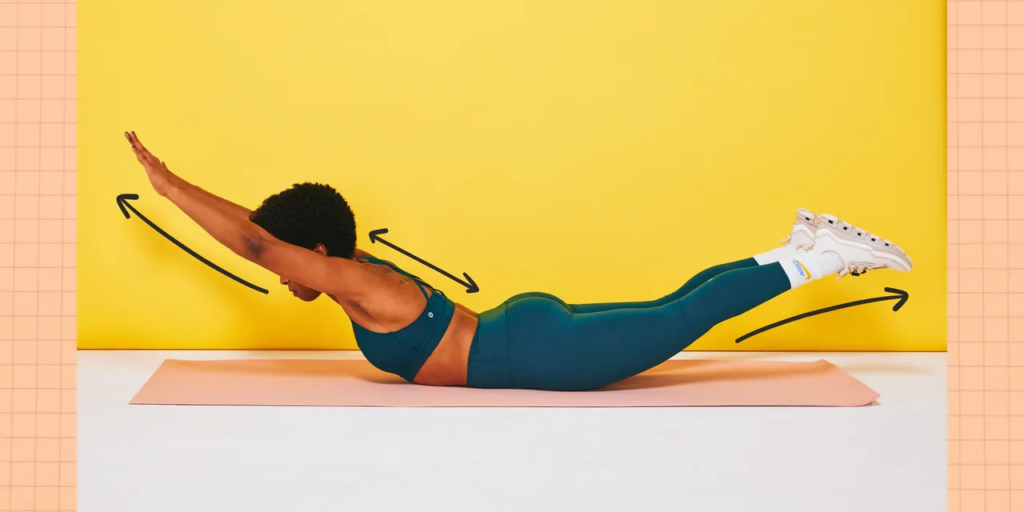
- How to do it:
- Lie face down with arms extended forward.
- Lift legs and arms simultaneously, squeezing glutes and hamstrings.
- Hold for a few seconds, then lower.
Fun fact: This exercise builds a stronger posterior chain, supporting a healthy spine and reducing injury risk.
Final Thought
Hamstrings often don’t get the love they deserve, yet they’re essential for powerful movements, posture, and injury prevention. With these 10 effective bodyweight exercises, you can sculpt stronger, more flexible legs without stepping foot in a gym.
Now it’s your turn! Try incorporating these moves into your routine 2–3 times per week, and watch your hamstrings transform – one rep at a time.
Frequently Asked Questions (FAQs)
How often should I train my hamstrings with these exercises?
For optimal results, aim to perform these hamstring exercises 2–3 times per week. Be sure to allow at least one rest day between sessions to give your muscles time to recover and grow stronger.
Can beginners do these exercises?
Absolutely! Many of these exercises, such as glute bridges and standing hamstring curls, are beginner-friendly. Start with lower reps and gradually increase intensity as your strength improves.
Do I need any equipment for these exercises?
Most of these hamstring exercises use just your bodyweight. For a few, like sliding leg curls, you can use simple household items such as towels or paper plates for slippery surfaces.
How long will it take to see results?
Consistency is key. If you perform these exercises regularly and pair them with a balanced diet and overall fitness plan, you can begin noticing increased strength and muscle tone in your hamstrings within 4–6 weeks.
Will these exercises help prevent hamstring injuries?
Yes! Strengthening your hamstrings with controlled, bodyweight movements can reduce your risk of strains, tears, and knee pain. Strong hamstrings also support proper posture and stability.
Can I combine these exercises with other leg workouts?
Definitely. These hamstring exercises complement squats, lunges, and glute-focused moves. Incorporating a variety of lower-body exercises ensures balanced muscle development.
How many reps and sets should I do?
For each exercise, aim for 2–4 sets of 10–15 reps. Adjust based on your fitness level – beginners may start with fewer reps and sets, while advanced individuals can increase volume or add progressions.










